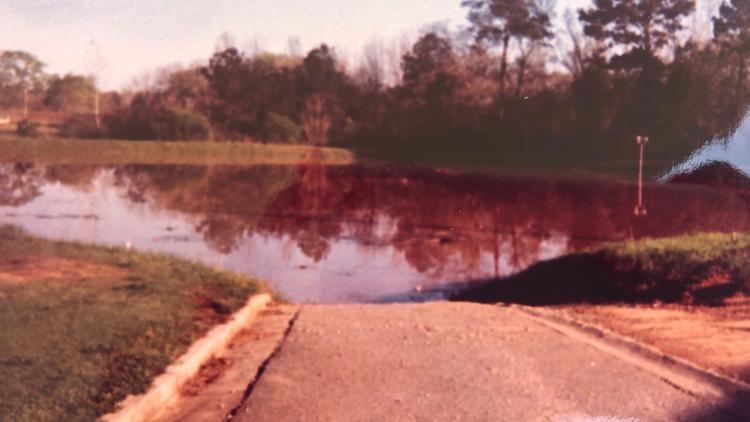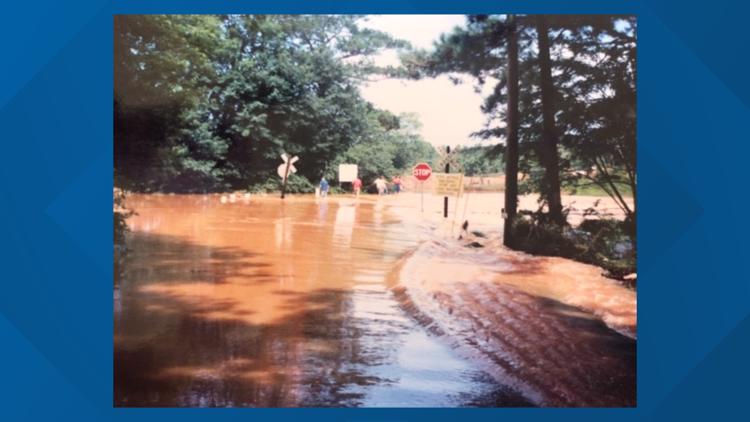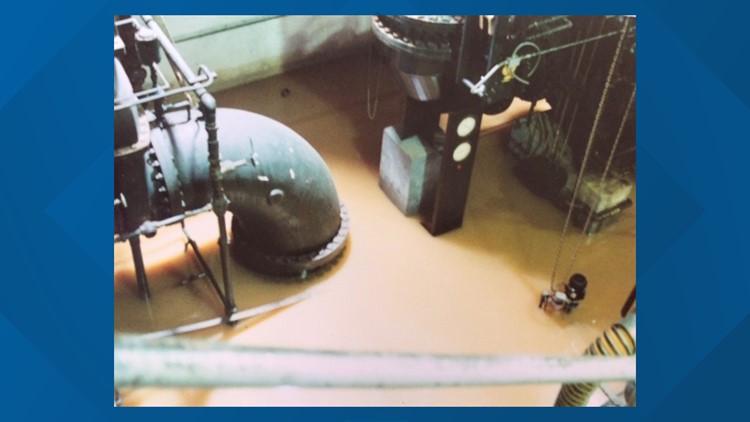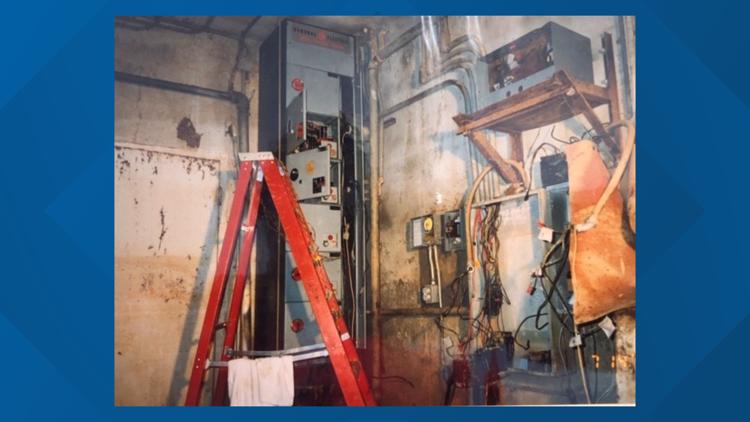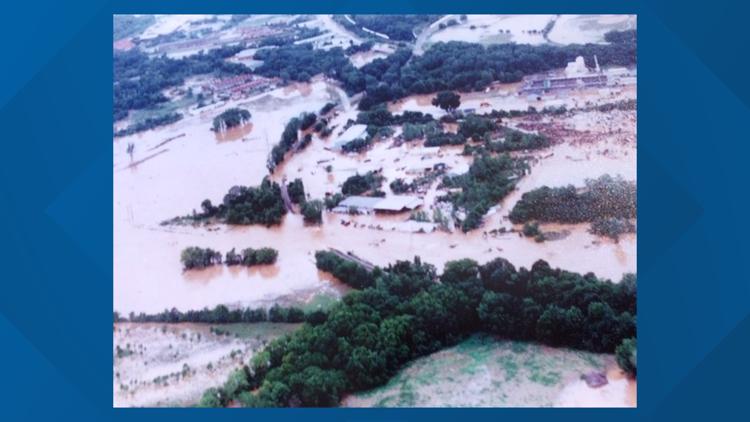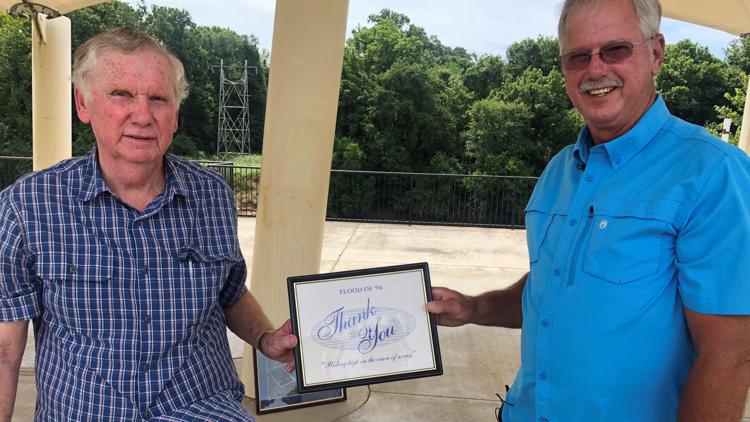MACON, Ga. — 25 years ago, 13WMAZ Meteorologist Bill Powell recapped the impressive rainfall totals from the remnants of Tropical Storm Alberto.
The storm, of course, caused the Flood of '94, but how did it become so damaging for Central Georgia?
Back in mid-June, the storm formed off the coast of Africa. It fought against wind shear and getting torn apart as it made its way to the Gulf of Mexico, but it ultimately prevailed.
On July 1, Alberto was born and made landfall on the Fourth of July in Destin. It quickly fell apart as it began tracking towards Georgia.
With little driving force and high pressure blocking to the north, the storm did its infamous loop bringing two days of tropical downpours to Georgia. What remained of the storm pushed west on July 7 and rain still fell in the coming days.
As the Ocmulgee and Flint Rivers rose over their banks, it left Central Georgia with a flood for the record books.
The Ocmulgee River is said to have peaked at 35.4 feet, but the gauge got swept away, so levels could have been even higher.
Alberto and its aftermath cost Georgia more than $750 million in damage.
First responders remember the flood
25 years ago, Macon-Bibb Fire Chief Marvin Riggins served as the training director during the flood. He credits it with shaping his career as the head of the department now.
As Alberto planted itself over Central Georgia causing the Flood of 94, first responders were called to duty at a magnitude they hadn't seen before.
"We had to go into total emergency mode, because there wasn't any running water here in our community," said Riggins.
Then Macon-Bibb Assistant Fire Chief Jimmy Hartley and Training Director Marvin Riggins were right in the thick of it. Riggins remembers that Fourth of July like it was yesterday.
"Things were beginning to fail on that day and I knew then that this is not normal for us to see because our stations were beginning to be without water," he said.
In the midst of chaos, it was former Macon-Bibb Fire Chief Jimmy Henson's leadership that shaped both Hartley and Riggins careers in the position afterwards.
"He was very competent and he was a very calming force during times of emergency and the bigger the emergency, the more calming force he was and that certainly was a strong suit during the flood," said Hartley in 2004.
"Having the knowledge of where we've come from and the enjoyment of where we are, I think that helps me to chart the future of the course of where we can go," said Riggins.
Riggins adds there are still about 20 men left on staff who worked during the flood.
Flood of '94 lead to infrastructure improvements
At the time of the flood, the Macon Water Authority was already looking to expand its Pierce Avenue facility upstream next to the Ocmulgee River.
Instead, the flood reached both the treatment plant and the newer site, with water reaching 317 feet above sea level.
25 Years Later | Remembering the Flood of 94
"It flooded that piece of property that the improvements or the additions were going on and it was obvious when that occurred that the location was not a location for the plant," said MWA President Tony Rojas.
The flood prompted the MWA to move their facility to Javors Lucas Lake at a much higher elevation. The plant opened in 2000, almost six years after the flood.
But what if something like Tropical Storm Alberto hit the region again?
VERIFY: Could the new Macon Water Plant flood?
13WMAZ Reporter Chelsea Beimfohr spoke to Macon Water Authority Executive Director Tony Rojas, former plant manager Don Arnold, and former assistant manager Chester Stewart to answer that question.
Arnold remembers the Flood of '94 like it was yesterday.
"No one had ever seen anything like it here," he said.
The flood destroyed the water plant, shutting it down for weeks, and leaving Macon without running water.
For 19 days, Macon Water Authority employees and volunteers worked 'around the clock' to get the plant back online, including William Brown.
"We had mud in every crevice, every pump and motor you could think of," said Brown. "It was ridiculous. There was nothing that could've survived, no equipment that could've survived."
So what are the odds it could happen again?
"It would have to be of Biblical proportions," said MWA Executive Director Tony Rojas. "This is one of the highest spots and one of the highest areas in all of Bibb County."
He says the new plant sits 425 feet above sea level, a lot higher than the old one. The flood would have to be 100 feet higher than the last one, but if that happened, all of Macon would be completely underwater.
Therefore, we verified, it's nearly impossible for the new plant to ever flood.
According to Rojas, the new plant $115 million, but the water authority received $95 million in grants to pay for it.
Want to see more archive clips from 13WMAZ's continuous coverage of the Flood of '94? You'll find lots of video from the vault on the 13WMAZ YouTube channel.
Be sure to like and subscribe to our videos here so you receive notifications for each new video we upload, and tune in to 13WMAZ News at 6 p.m. for special coverage of the 25th anniversary of this historic event.



